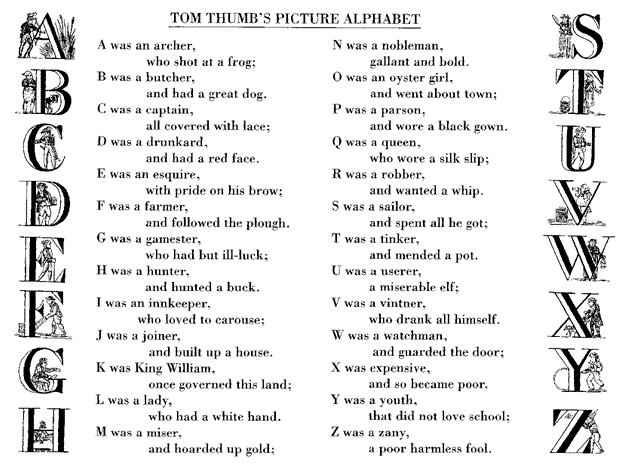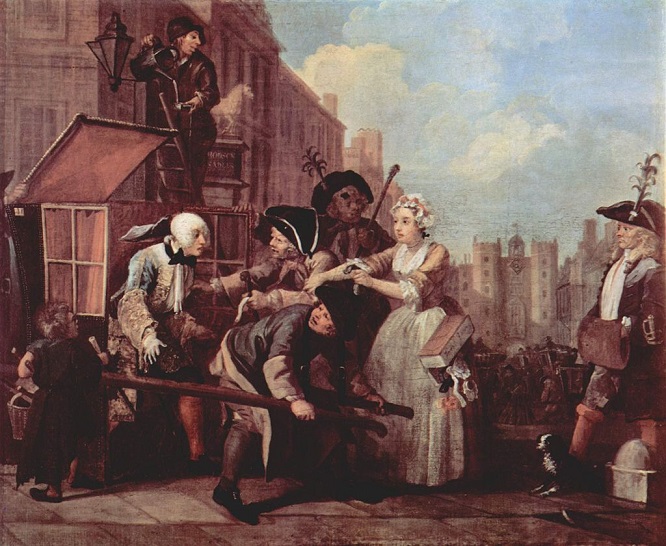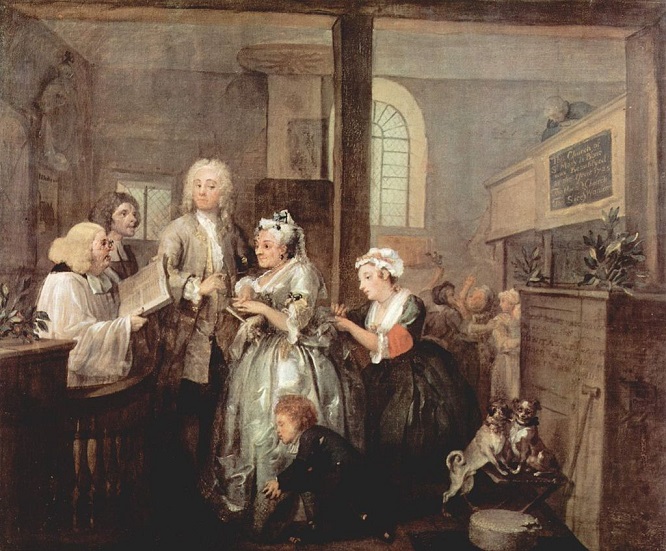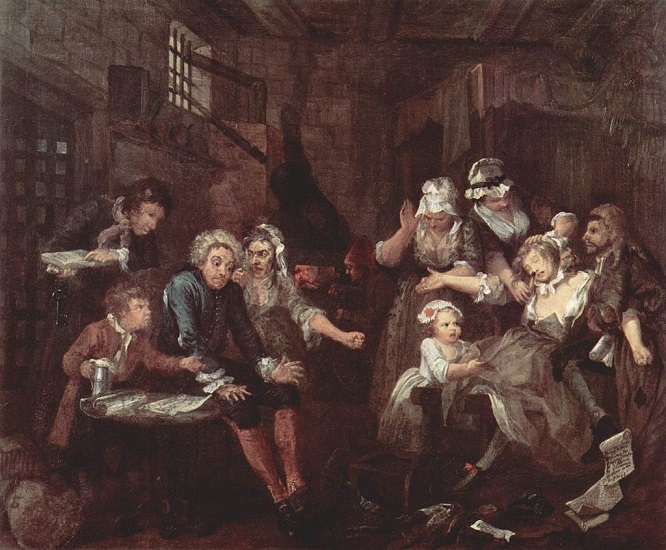
Life in 18th Century England

Introduction
In 1797, Sir F.M. Eden published The State of the Poor, a study of the standard of living of ordinary people in Britain.
One family described by Eden consisted of a farm worker, his wife and four children (two of whom, aged 12 and 14, worked on local farms). The family was quite well off the family income was £46 a year.
The table below shows the family budget. Eden was not good at maths the total adds up to far more than £46 but it gives us an idea of how a fairly prosperous farm worker's family lived in the eighteenth century
After you have studied this webpage, answer the question sheet by clicking on the 'Time to Work' icon at the top of the page.
Links:
The following websites will help you research further:
Life in 18th
century England:
Factual webpage on Social and Family Life in the Late 17th & Early 18th Centuries
Good description of 18th Century London - its daily life and hazards
Nice interactive activity about a woman's life in the 18th century
1: A Farm Labourer's Family Budget
A case study from Sir F.M. Eden, The State of the Poor (1797):
|
Every week they bought:
8 large loaves £0.70 2 lb cheese £0.06 2 lb butter £0.07 2 lb sugar £0.07 2 oz tea £0.02 0.5 lb oatmeal £0.15 0.5 lb bacon £0.15 Milk £0.01 |
Their yearly expenses on other things were:
Soap and candles £2.36 Fuel £1.00 Rent £2.25 Shoes £1.50 Clothes £4.60 |
Explanations:
A 'large loaf' was about twice as big as a modern loaf
1lb (one pound) weighed about half a kilo
1oz (one ounce) was about 30 grams
Most of their fuel would have been collected free
Earning £46 a year, this family was relatively well-off.
The average income for a farm labourer's family was £30.
And compare this poor
Cumberland family's yearly budget:
- Rent
£1.35
- Fuel £1.70
- Meat £0.45
- Other items £1.30
- Oatmeal £11.70
2: Society in 1750
A traditional rhyme dating back at least as far as 1761:

3: A Rake's Progress
In the 1730s, the English artist William Hogarth produced this series of paintings, showing the story of 'Tom Rakewell', who came into money but then ruined himself. Hogarth's pictures present a fascinating insight into what it was like to live in England in the middle of the 18th century:

A: An 18th century home
This scene shows Tom inheriting his father's estate. He is not mourning the death of his father he is being measured up for a set of fine clothers. To the fury of her mother, he is offering money to end his betrothal to his pregnant fiancee, Sarah Young he hopes for better.
Can you find:
the mortgages, leases and other financial documents on the floor.
the fire being made for the first time in a long time.
a servant hanging the room with black cloth (a sign of mourning).
gold coins are falling from the broken cornice (there were no safe banks in those days, so people hid their money in different places).
the signs of old age a stick, a crutch and spectacles by the fire.
the boots, re-soled and re-nailed (what does this tell you about Tom's father).
the love letters in Mary's mother's pocket, and the ring in Sarah's hand.
the lawyer stealing from Tom already.

B: An 18th century tavern
This scene shows Tom wasting his money at The Rose tavern in Covent Garden.
Can you find:
wine, women and song.
the woman stealing Tom's watch as she pretends to caress him.
the woman spitting at a rival (who is threatening her with a knife).
the woman drinking from a bowl, another from the bottle (no manners here!)
the woman setting fire to the picture of the world (what is the meaning of this?)
the blind harpist, the trumpeter and the female ballad singer by the door.
the African enslaved woman.
the black spots that the prostitutes have used to disguise the sores from their STDs.

C: A 18th century street scene
This scene shows Tom being arrested for debt; he is saved by his fomer fiancee, who pays off what he owes.
Can you find:
the sedan chair for transport.
the shoe-shine boy stealing Tom's cane.
the Welshman on the right (a symbol of honesty and carefulness with money).
the enormous leek in the Welshman's hat which shows that it is 1 March St David's day.
the busy street scene in the background.
the lamplighter pouring oil in Toms head.

D: An 18th century church
This scene shows Tom marrying a rich widow in Marylebone Church; in the eighteenth century, Marylebone was well outside London a sign that Tom was ashamed of the marriage and wanted to keep it secret.
Can you find:
even as he marries the old woman, Tom is looking at her young maid.
the parson (vicar) and the clerk old, lazy, boring and stupid.
the broken list of Commandments behind the parson.
the cobweb on the box for gifts to the poor (far right).
the fight in the background between the guests and the pew-opener (with the keys).
the dogs are more in love than the humans Tom is marrying the old woman only for her money!

E: An 18th century prison
Tom continues wasting his money, and this final scene shows him in the Fleet debtors' prison. He is impoverished (he has no coat) and is clearly going mad.
Can you find:
the prison warder demanding food money; and the boy demanding payment before he will hand over the tankard of beer.
the failed attempt to write a play; it lies on the table, with a note which reads: 'I have read your play and find it will not do.' .
Tom's old wife now ruined herself berating him.
Sarah (with their child) now also ruined fainting in horror.
a chemist trying to make alcohol in the still in the background.
the wings over the bed which Tom has made to try to escape.